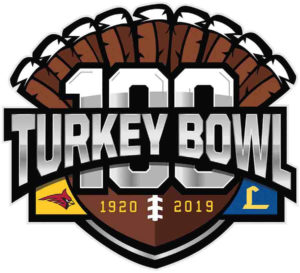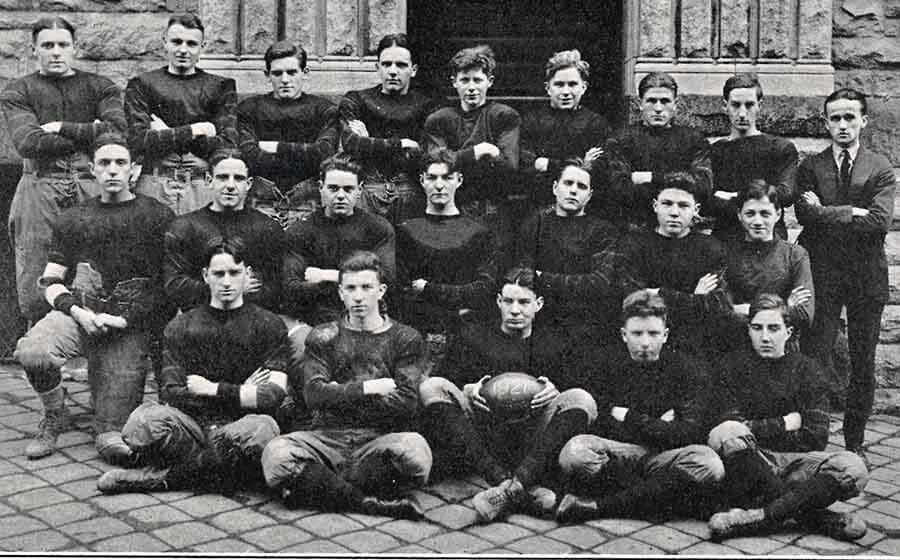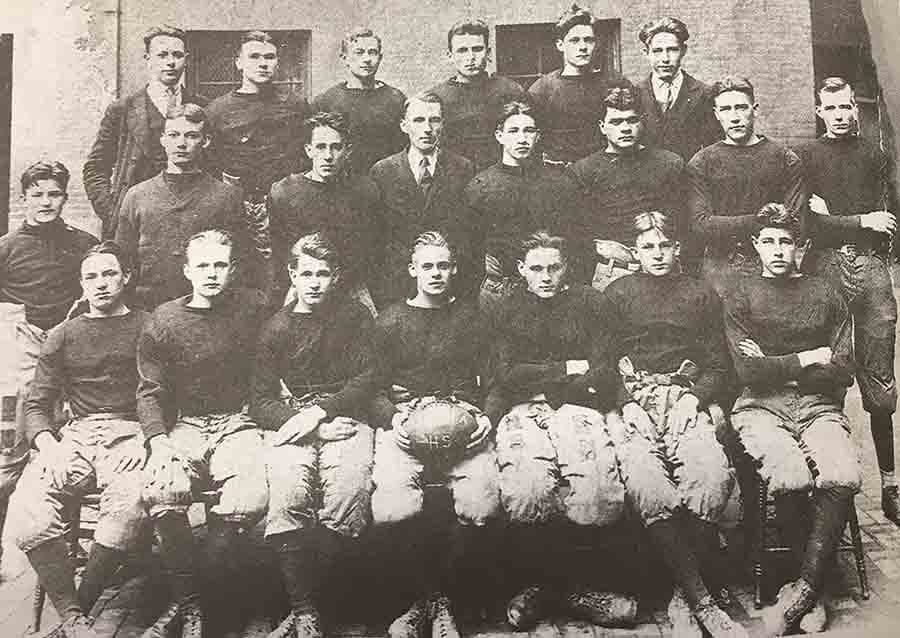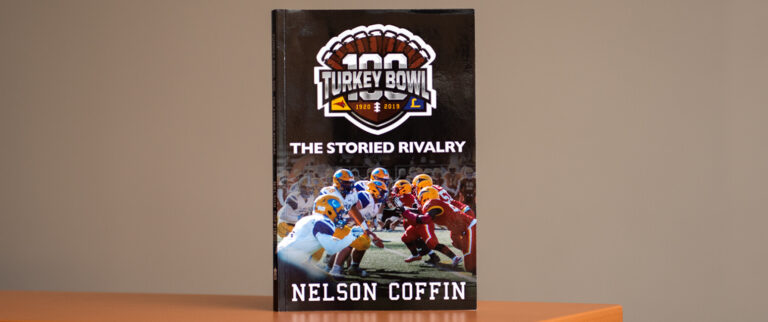 Editor’s Note: The collaboration between Calvert Hall College and Loyola Blakefield on the 100th playing of their football rivalry Thanksgiving Day includes a commemorative book, “Turkey Bowl 100: The Storied Rivalry” (Cathedral Foundation Press). It was written by Nelson Coffin, a 1966 graduate of Calvert Hall. It is available for purchase in both campus bookstores.
Editor’s Note: The collaboration between Calvert Hall College and Loyola Blakefield on the 100th playing of their football rivalry Thanksgiving Day includes a commemorative book, “Turkey Bowl 100: The Storied Rivalry” (Cathedral Foundation Press). It was written by Nelson Coffin, a 1966 graduate of Calvert Hall. It is available for purchase in both campus bookstores.
The following excerpt opens the chapter titled, “The 1920s.”
By the beginning of a new decade that would come to be known as the “Roaring ’20s” or the “Jazz Age,” America’s first involvement in a major military conflict outside its boundaries had concluded with the signing of the armistice on the eleventh hour on the eleventh day of the eleventh month of 1918.

The Great War was over and peace and prosperity beckoned.
No longer would high school-age students face the prospect of being drafted after graduation – as 18-year-olds were briefly in 1918 – and could instead join the nation in turning from a wartime economy toward unbridled expansion and optimism, including the skyrocketing popularity of college football that was finding a similar foothold in the high school ranks.
In 1920, Calvert Hall College and Loyola High School were located only about a mile apart in downtown Baltimore, making the budding rivalry between the two all-boys Catholic schools more likely, if not downright inevitable.
Three years after its inception in 1852, Loyola had moved from its original home on Holliday Street to Calvert Street, next to St. Ignatius Church.
Calvert Hall, the oldest Christian Brothers school in the country and originally associated with what is now known as the Baltimore Basilica since the school opened in 1845, relocated from Saratoga Street to the corner of Mulberry and Cathedral streets in 1890.
Loyola and Calvert Hall students surely knew each other from attending the same parochial schools that dotted the city and its surrounding suburbs and still do today.
Those students were also likely to share the same streetcars on their daily commute to and from their respective schools, which probably made for some lively back-and-forth banter that may have contributed to the first major test on the gridiron between the downtown neighbors.
It came to fruition not on Thanksgiving Day of 1920, but nearly two weeks before the holiday, on Nov. 12, 1920.

The game was played at Homewood Field on the campus of Johns Hopkins University and is notable as much for its precedent-setting as it is for its irony.
According to a story on the Baltimore Sun’s Retro Baltimore website, Loyola transfer fullback Louis Walker scored the game’s only touchdown in the 4th quarter of Calvert Hall’s 9-3 victory to conclude the Cardinals’ inaugural football campaign.
“Not only did he score the winning touchdown, on a pass from quarterback Ray Brooks with less than five minutes remaining, but he also kicked a first-quarter field goal from the 25-yard line that first put Calvert Hall on the scoreboard. (Walker wasn’t perfect, however – he missed the point-after attempt on his touchdown),” the Sun post read.
With that, the gridiron rivalry was off and running to what has become a Baltimore Thanksgiving Day tradition that is believed to be the oldest continuous series between Catholic high school football teams in the country.
The teams would meet nine more times before 1930 with four of those battles ending in scoreless ties, including the 1921 showdown in which the Dons’ defense stopped the Cardinals at the 5-yard line and Calvert Hall defender Hugh Fitzpatrick making a game-saving tackle at the 20-yard line after a long run by Loyola’s (first name not given) Lacy late in the game to preserve the deadlock.
Of the five other games in the 1920s, the Dons would prevail in three of them to finish the first decade of the series tied 3-3-4 with Calvert Hall.
Loyola’s overwhelming 47-0 triumph in 1922 — listed as 46-0 in the 1923 Cardinal and Gold Yearbook — was then and still is the outlier of the rivalry.
The game is significant not just because it gave the Dons their first win against Calvert Hall, it also remains to this day as the greatest point differential in the 99-year history of the storied series, despite being played in an era of dominating defenses and plodding offenses.
Excerpted from “Turkey Bowl 100: The Storied Rivalry,” By Nelson Coffin. Copyright © 2019, Calvert Hall College High School and Loyola Blakefield. Used with permission.
For more Turkey Bowl stories, click here.



